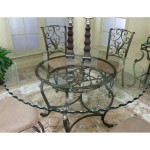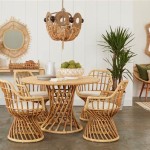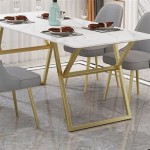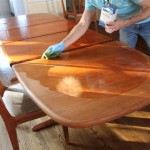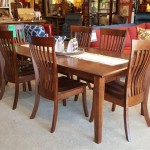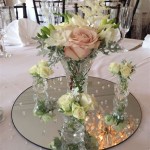The Enduring Charm of Vintage Round Pedestal Dining Tables
Vintage round pedestal dining tables represent a timeless design choice, offering functionality and aesthetic appeal across various interior design styles. Their single, central support system provides several advantages over traditional four-legged tables, contributing to their enduring popularity. This article delves into the key features, historical context, design considerations, and maintenance aspects of vintage round pedestal dining tables.
Space Optimization and Social Interaction
A primary benefit of the round pedestal design lies in its efficient use of space. Unlike tables with legs at each corner, a pedestal base eliminates obstructions, allowing chairs to be positioned more freely around the table. This is particularly useful in smaller dining areas or where maximizing seating capacity is a priority. The absence of legs also promotes better legroom and overall comfort for diners. Furthermore, the round shape encourages equal participation in conversation, fostering a sense of community as everyone can easily see and interact with each other. This makes it an ideal choice for social gatherings and family meals.
The circular form inherently promotes a more egalitarian seating arrangement. No one person is relegated to the "end" of the table, as is the case with rectangular or oval designs. This encourages a more inclusive and democratic dining experience. Vintage models, often smaller in diameter than contemporary versions, were specifically designed for intimate gatherings and focused conversation. The compact nature of these tables also lends itself well to apartment living or smaller homes where space is at a premium.
When considering a vintage round pedestal dining table for a smaller space, its adaptability is a crucial advantage. It can be easily placed in a corner and still provide ample seating for a small number of diners. For larger gatherings, extra chairs can be added without the awkward obstruction of table legs. The table's central pedestal allows for a more flexible arrangement, adapting to changing needs and spatial constraints.
Materiality and Craftsmanship in Vintage Pieces
Vintage round pedestal dining tables were constructed from a diverse range of materials, each contributing to their unique character and aesthetic appeal. Solid hardwoods like mahogany, walnut, oak, and maple were commonly employed for their durability and rich grain patterns. These woods were often meticulously crafted and finished to showcase their natural beauty, enhancing the table's overall elegance.
Mahogany, favored for its reddish-brown hue and resistance to warping, was frequently used in higher-end vintage tables. Walnut, known for its dark, sophisticated tones and intricate grain, provided a more formal and refined look. Oak, a robust and readily available wood, was a practical choice for more utilitarian designs, often found in farmhouse or country-style settings. Maple, with its light color and smooth texture, offered a versatile option that could be stained or painted to match various décor schemes.
Beyond the primary wood, vintage tables often incorporated other materials to enhance their design. Veneers, thin layers of wood applied over a less expensive core, were used to create intricate patterns or achieve specific aesthetic effects. Brass or bronze accents might be incorporated into the pedestal base or table edge, adding a touch of glamour and visual interest. In some cases, the tabletop might be crafted from marble or other stone, providing a luxurious and durable surface. The craftsmanship evident in these vintage tables reflects a dedication to quality and attention to detail that is not always found in contemporary furniture.
The pedestal itself showcases a wide array of designs, reflecting the diverse stylistic trends of different eras. From simple, tapered columns to elaborately carved and fluted bases, the pedestal plays a crucial role in the table's overall aesthetic. Victorian-era tables often feature ornately carved pedestals with intricate detailing, while mid-century modern designs typically embrace clean lines and minimalist forms. The choice of pedestal design can significantly influence the table's overall character and its compatibility with different interior design styles.
Stylistic Versatility and Integration into Modern Interiors
One of the key attractions of vintage round pedestal dining tables is their remarkable versatility in complementing a variety of interior design styles. These tables can seamlessly integrate into traditional, contemporary, or eclectic settings, adding a touch of timeless elegance and character. Their adaptability stems from their simple yet sophisticated form and the diversity of materials and finishes available.
In a traditional setting, a mahogany or walnut table with a carved pedestal can serve as a focal point, enhancing the room's classic aesthetic. Paired with antique chairs and a formal chandelier, it creates a sense of refined elegance. In a more contemporary space, a table with a clean-lined pedestal and a lighter wood finish can provide a subtle contrast, adding warmth and character without overwhelming the minimalist design. The round shape helps soften the rigid lines often found in modern interiors.
For those embracing an eclectic style, a vintage round pedestal dining table can serve as a unifying element, bridging different design elements. Its neutral form allows it to complement a mix of vintage and modern chairs, as well as a variety of accessories and artwork. The table's vintage charm adds a touch of personality and history to the space, creating a unique and inviting atmosphere.
The size of the table is also a crucial factor in its integration into a particular space. Smaller vintage tables are ideal for apartments or breakfast nooks, while larger tables can accommodate larger gatherings in more spacious dining rooms. The scale of the table should be carefully considered to ensure it complements the overall proportions of the room and provides adequate space for comfortable dining.
Beyond its stylistic versatility, a vintage round pedestal dining table can also serve as a conversation starter and a reflection of personal taste. Its unique character and history add a sense of depth and authenticity to the home. By carefully selecting a table that aligns with their individual style and preferences, homeowners can create a dining space that is both functional and aesthetically pleasing.
The surface of the table itself can also be adapted to suit various stylistic preferences. A natural wood finish showcases the beauty of the grain and provides a warm, inviting feel. A painted finish can add a pop of color or create a more whimsical aesthetic. A glass tabletop can offer a sleek and modern look, allowing the pedestal base to become the focal point. The possibilities are endless, allowing homeowners to customize the table to perfectly match their personal style.
Ultimately, the enduring appeal of vintage round pedestal dining tables lies in their ability to transcend trends and adapt to changing tastes. Their timeless design, combined with their functional advantages and stylistic versatility, makes them a cherished addition to any home. The care and attention given to their construction, evident in the quality of materials and craftsmanship, ensures that these tables will continue to be enjoyed for generations to come.

Vintage Round Pedestal Dining Table

Classic Round Pedestal Dining Table Antique Farmhouse

Antique Country Oak Round Pedestal Dining Table Chairish

48 Round Christeen Single Pedestal Dining Table By Dutchcrafters

Vintage Round Dining Table

National Furniture Co Antique Empire Quartersawn Oak Round Dining Table At 1stdibs

French Art Deco Round Pedestal Dining Table For At 1stdibs 1930

Vintage Round Pedestal Dining Or Conference Table For At 1stdibs Antique

East West Furniture Amt Wbk Tp Antique Dining Table A Round Wooden T Main Site
Nourished Souls Round 1960s Teak Pedestal Dining Table Casa Victoria Vintage Furniture On Los Angeles Sunset Boulevard

